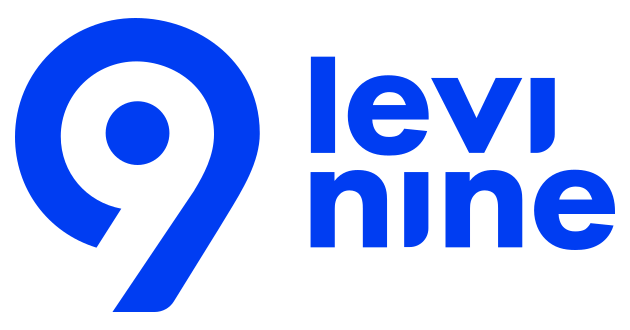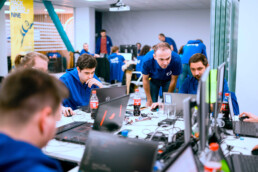Transparency, Teamwork, & Trust: The Joys Of Collaborative Specification
When it comes to putting software requirements together; transparency, teamwork, and trust are key to a successful project.
That’s why we put so much emphasis on ‘collaborative specification’ here at Levi9, as part of any customer project.
But what does it actually involve? What’s the process? Who needs to be part of it? Is it essential? Does it make things easier?
So many questions(!). Let’s take a closer look.
Transparency
In order to get the result our customers’ need, they have to tell us exactly what they’re trying to achieve – right from the outset.
It’s mission critical. It’s not ‘cos we’re nosy; we just need to fully understand our customers’ business goals – in order to start building a software solution that’ll hit their objectives.
It’s not always easy for businesses to define and specify their requirements alone – which is why collaborative specification is a great way to start. It helps everyone involved to focus on the ambition rather than the innovation.
Likewise, as a software development company, we need to make it crystal clear what we’re able to offer given time, budgets, and expectations. It’s a consultative approach, but it keeps everyone honest about what’s possible.
Teamwork
Collaborative specification also ensures that we set a precedent for ongoing communication and activity with our customers – which are essential for any successful partnership. This means we need to involve potential users and stakeholders across the customers’ business – in addition to the IT team and the software engineers building the new solution.
Of course, some customers often have very clear and detailed requirements prepared, while others (the vast majority) don’t. But involving development teams in this way, we can ask the right questions and challenge requirements – to ensure the correct actions are taken.
However prepared our customers are, it’s important that everyone is aligned, shares the same goals, and has the same understanding – which is why we take a similar approach to best practice with every customer. Success hinges on being able to verify requirements and close gaps in understanding.
Trust
Overall, collaborative specification allows us to build trust with our customers – right from the very start of our relationship. It levels the playing field by establishing the expertise of everyone involved – which sets up a true partnership rather than a ‘client-supplier’ hierarchy.
When there is no collaboration between business and technical teams in defining software requirements, there’s a high chance that the incorrect assumptions will be made, which eventually leads to the wrong solution being created. When you have trust, you have honesty. And when you’re easily able to have an open conversation, you can save a lot of hassle, time, and money.
Work In Progress
A nice example that demonstrates exactly how we handle the collaborative specification process is the approach we implemented with our customer: one of the largest energy providers in the Netherlands.
After breaking down the process into individual project milestones, we conducted a user story mapping session to identify important pieces of functionality and to outline the fundamental steps needed for the desired user flow.
This was an opportunity for the product owner, business representatives, and the development team to contribute to the specification process. It also allowed us to spot dependencies with third party systems early on, and to point out technical possibilities and any system restrictions – in order to plan an Agile release.
We’ve noticed that with this approach teams are more proactive in sharing ideas during implementation. Also, when the time is taken to understand each requirement, there’s a higher chance that the right solution will be built first time – as the potential issues and functional gaps are detected before the team starts developing code.
At Levi9, we enjoy being involved in the process of co-creation, as we have vast experience with different collaborative specification models and techniques – to help our customers get from idea to high quality working software in the shortest time possible.
To talk to our experts about how we can get your next software project up and running, drop us a line on info@stagingwww.levi9.com.
11 Mar - Webinar Accelerated Development
March 11th 2020
Webinar Accelerated Development - Tech9 Survey results
In the market of tailor-made software solutions for business technology, innovation will be focused on increasing the PACE OF DELIVERY. After all, pace influences time to market and indirectly costs.
The industry is delivering new technologies that facilitate this pace of delivery. Cloud services are the biggest accelerators. Developing high quality business technology will become more and more a skill of smart orchestration and integration of services and unique software.
Serverless eliminates the need to provision and manage infrastructure components (e.g., servers, databases, queues, and even containers), allowing teams to focus on code while minimizing their operational overhead.
Please join us for a session where Levi9’s Thought Leader Dragan Gajic will discuss the outcome of the Tech Survey 2020, together with Amer Grgic, CTO of Tevreden.nl and founder of Livebytes and Sander Kieft, Senior Director Architecture & DevOps of PVH (home of Tommy Hilfiger, Calvin Klein).
Please block 26 May & register fast (limited seats available)
Dragan Gajic, Thought Leader Levi9
Amer Grgig, CTO Tevreden.nl, Founder Livebytes
Sander Kieft, Senior Director Architecture & DevOps PVH
13 Feb - DevOps and Agile Transformation
February 13th 2020
DevOps and Agile Transformation
With over 15 years of experience in software development and Scrum processes since 2007 in various setups, Levi9 has accumulated vast hands-on experience in the agile way of working in a variety of software development environments.
In our upcoming “DevOps and Agile Transformation” event we will share our best practices in delivering software solutions.
Our focus is on delivering software on the revenue generating side of IT (business IT) in close cooperation and high interaction with our customers. This is where repeatable quality and short time to market, from the business idea to software on production, make the difference.
In this event, we will provide insight into various aspects of how to build and refine a software development organisation that provides reliable and measurable output sprint by sprint.
Interested in more information & the program? Click on the link below to register for this free event.
From a business idea to software. We will show you how we are using User Story Mapping, co-creation and Specification by example techniques to turn business ideas into software.
16:00 Agile culture, metrics and visibility
Agile does not mean no commitment to results. We show you which key Scrum metrics are relevant to capture, track and base a continuous improvement process on. How can you make Sprint results predictable, build a high-performance team and achieve both team and Product Owner happiness?
17:00 DevOps - or how to deliver business value early
We will show you how to deliver business value early, automated and repeatable and how to achieve self service for Scrum teams, continuous delivery and zero-downtime deployments.
18:00 Closing
Drinks & Networking




